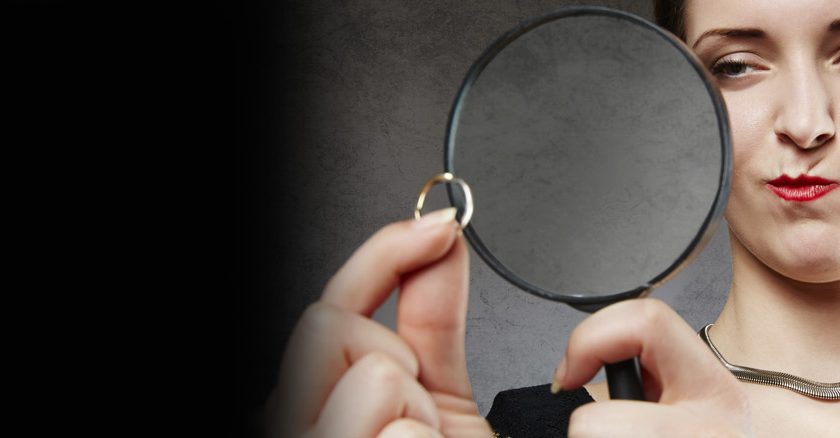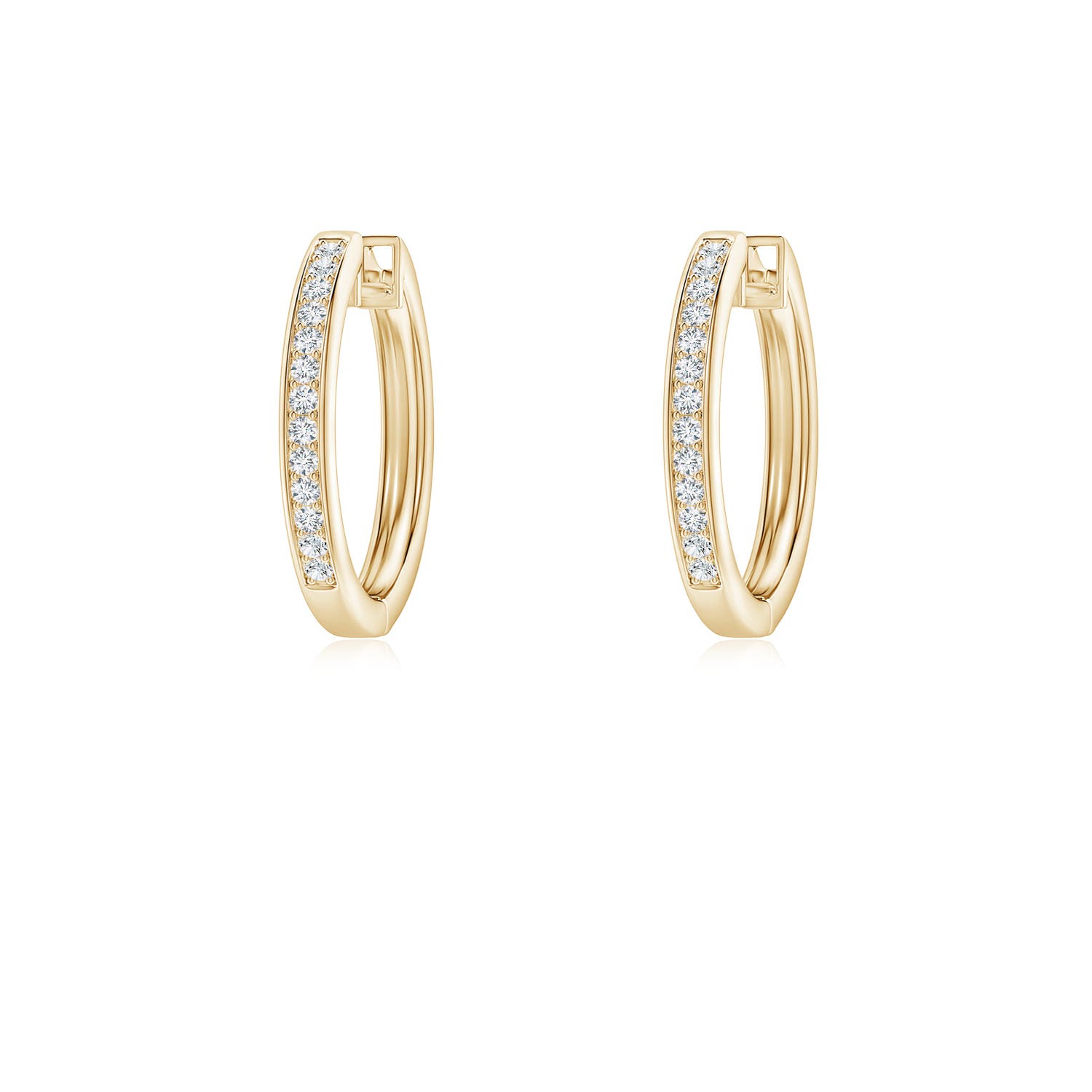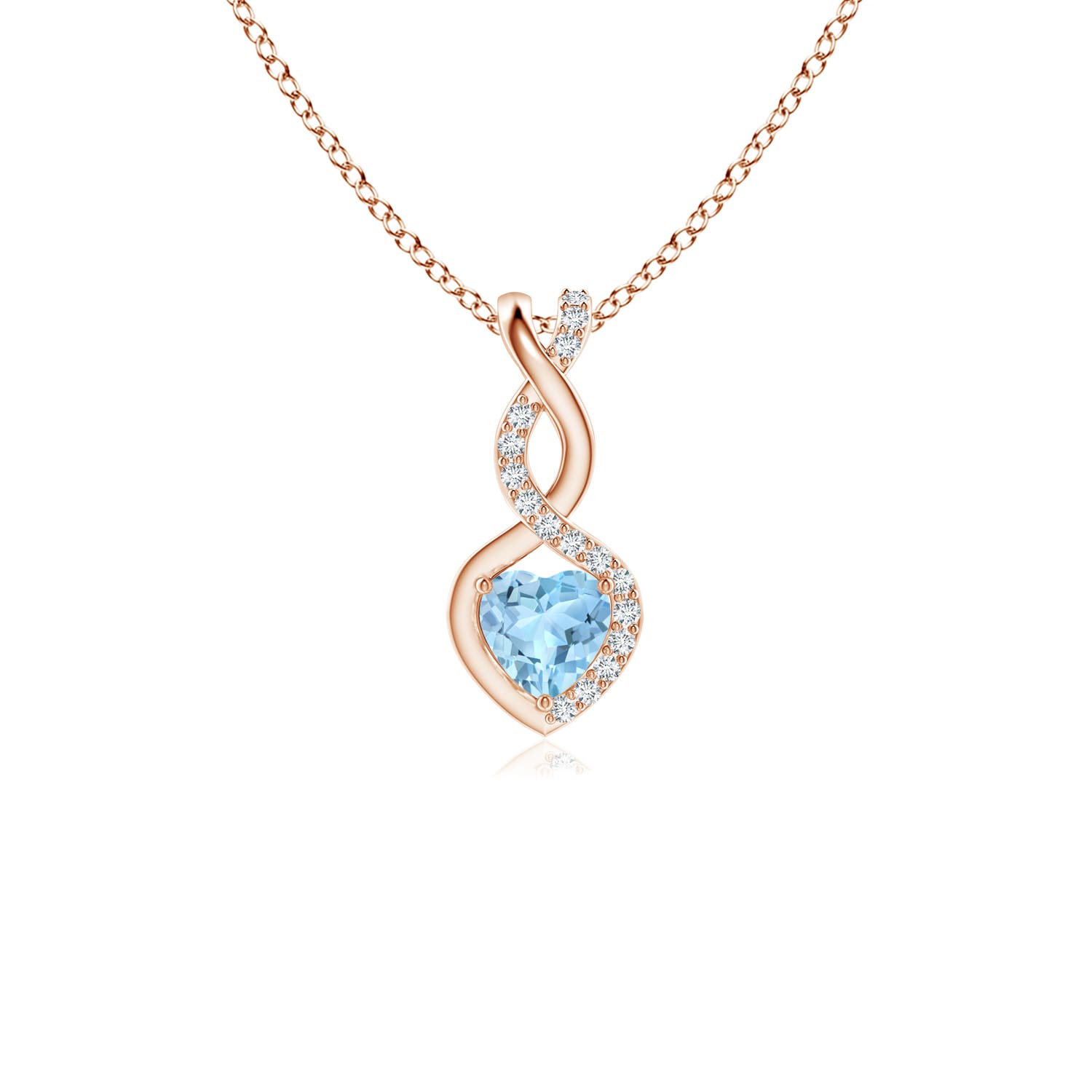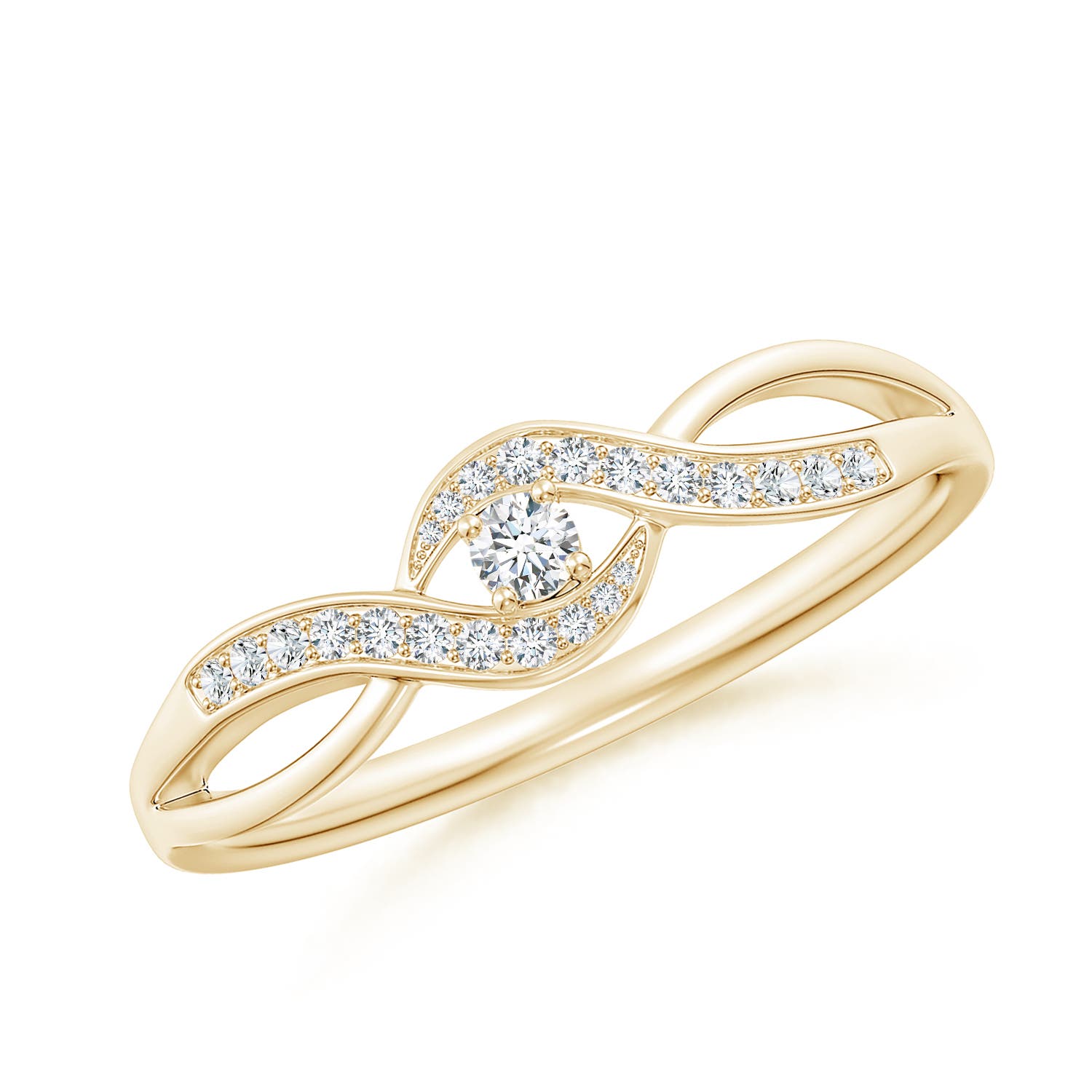Love flaunting everything authentic gold? Well, there is no doubt that any gold jewelry will make a wonderful addition to your jewelry box, except the fake ones. But, how can you be sure if the piece you bought is real and not gold-plated, gold-dipped or gold-filled?
You can easily find this out with the help of a few tests. How to test gold at home you ask? That’s exactly what we are going to discuss in this article.
So, sit back and read on…
Before we get to the main topic, let’s tell you that gold in its purest form is extremely soft and malleable. Therefore, it is mixed with different metals like silver, copper, nickel, palladium, etc. to give it the strength it requires to make a durable piece of jewelry.
Shop Gold Jewelry
| Yellow Gold Jewelry | White Gold Jewelry | Rose Gold Jewelry |
Depending on the amount of pure gold present in the alloy, it can be placed in different purity levels ranging from 14 karats to 24 karats gold. The same (14k, 18k, 24k) is usually stamped on your gold jewelry. In case of no stamp, it is difficult to tell if your gold is real. This is exactly where the need for testing your jewelry at home comes in.
So, How to Test Gold at Home
There are seven ways to test real gold at home without harming or damaging your piece. However, in case of fake gold, the piece might undergo certain changes when put through the tests that may be irreversible. Without wasting more time, let’s see what these tests are and how can you easily conduct them at home.
| Tests | What Do You Need? |
| Toothpaste | Plain white toothpaste, running water |
| Bleach | Ordinary household bleach, glass bowl, running water, soft cloth |
| Makeup | Liquid foundation |
| Lemon | Lemon juice, white cloth |
| Water | Glass of water, vial, weighing scale |
| Vinegar | Dropper or glass bowl, white vinegar, water |
| Magnet | Powerful neodymium magnet, wooden surface |
1. How to Test Gold at Home With Toothpaste
Apply a small amount of plain white toothpaste on your gold jewelry and rub it for about 30 seconds using your finger. You will see a black spot beginning to form in that place. Hold your jewelry item under running water and rinse off the toothpaste.
If your gold piece is real, the black spot will disappear making it look clean and shiny. If you can still see the black spot, this means the item is fake.
Do note that this test is not 100% accurate. Also, it is not meant for gold-plated jewelry as doing so will remove the gold plating from your piece, thereby revealing the metal underneath.
2. How to Test Gold at Home With Bleach
Real gold does not react to most substances and common household bleach is one of them. However, make sure to not use a colorfast or perfumed bleach for this test as the ingredients in the same may harm your piece.
To conduct this test:
- Fill a glass bowl with ordinary bleach, enough to completely submerge the accessory. You don’t need a lot of bleach here.
- Add your accessory to the filled bowl.
- Look at it closely as there may be a subtle reaction like telltale bubbles, change in the color of the bleach or your jewelry item.
If any of these changes occur, the piece in question is either gold-plated or totally fake. Remove the jewelry from the bleach immediately after and thoroughly rinse it under running water. Pat dry with a soft cloth in order to completely get rid of the bleach.
Important Note: Don’t perform this test on a gemstone-studded gold accessory as it can severely damage the stone.
3. How to Test Gold at Home With Makeup
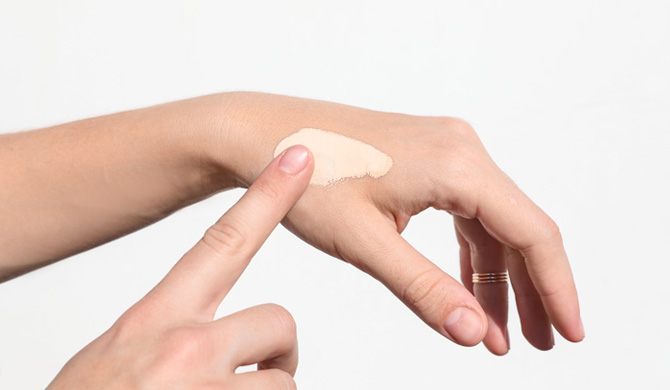
Even though it is not comparatively reliable, this test is considered to be a quick and easy one to find out if your accessory is real or fake.
Start by applying some liquid foundation on the top of your hand. Blend it properly and let the layer dry. Once done, rub your gold piece on the foundation. If doing so leaves a black mark on that area, your gold is pure and real. However, if there is no change, the accessory is probably fake.
4. How to Test Gold at Home With Lemon
A citrus fruit known for its acidic nature, lemon helps easily differentiate between a real and fake piece of gold jewelry. To conduct the test using lemon, all you need to do is:
- Cut a lemon into half and squeeze a few drops of its juice onto the jewelry in question.
- Clean the gold piece using a soft, white cloth.
If this cloth turns black, the accessory is not authentic. However, if the cloth is still white and clean, your gold piece is real.
5. How to Test Gold at Home With Water
A float test using water is the easiest and safest way to tell if your gold is real at home. Start the process by taking a glass and filling it with water. Drop the gold accessory you want to test in the filled glass. If your gold piece sinks to the bottom of the glass, it is real. This is because gold is a heavy precious metal. However, if the piece floats on the top, it is definitely fake.
While this test will only help you determine if your gold is real or fake, there is another way to find out the purity of your gold accessory with the help of water, a few tools and some knowledge of math. This will especially help you test 14k and 18k gold at home.
- To start with, weigh your gold accessory using a small, sensitive scale and note down the weight in grams.
- Next, fill a vial, big enough to hold your accessory, with water. There is no need to fill it to the top, just have enough water to completely submerge your gold jewelry piece.
- Mark the level of water in the vial before you drop your accessory in. Now, add your gold piece to the vial and mark the level of water again. Calculate the difference between the two measurements by subtracting the smaller measure from the greater measure.
- Here is where you need to do the math. With the help of this formula, find the density of your gold accessory: Density = mass/volume displaced.
- Anything around 19 g/ml means that your piece is made of real gold or another metal with a similar density.
Gold jewelry pieces with different purity levels feature different density ratios. You can use the following values as a baseline to find out the purity of your piece with respect to its density.
- 14k gold – 12.9 to 14.6 g/ml
- 18k yellow gold – 15.2 to 15.9 g/ml
- 18k white gold – 14.7 to 16.9 g/ml
6. How to Test Gold at Home With Vinegar
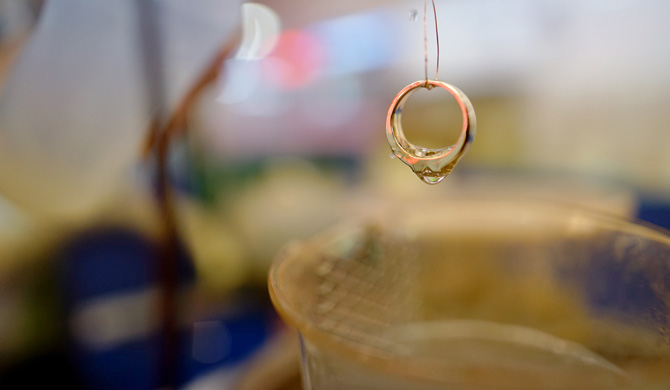
Another great way to test your gold piece is with the help of white vinegar. To conduct this test, you need to:
- Hold your accessory in your hand or place it on a table.
- Using a dropper, pour a few drops of white vinegar on the metal.
- Or fill a glass bowl with white vinegar and drop your gold jewelry into it. Leave it aside for 5-8 minutes. Remove the piece and rinse it with water.
No matter what method you choose to go with, even a slight change in the color of the metal means it is not real. On the flip side, if your accessory continues to look shiny, it is definitely not fake.
7. How to Test Gold at Home With Magnet
Last but not the least, you can test your gold using a powerful neodymium magnet (make sure you are not using a fridge magnet as it is not powerful enough). But before we tell you how to go about it, let’s first answer the question, ‘Is gold magnetic?’
No, real gold is not magnetic. However, the metals that are added to pure gold to make it strong and durable enough for everyday jewelry may be magnetic. Having said that, do note that a very small amount of these magnetic metals is mixed with pure gold. And therefore, the resultant gold alloy is also not magnetic enough to get attracted to a magnet.
Now, go ahead and do the test…
- Place the gold accessory you want to test on a wooden table or surface.
- Gradually bring the neodymium magnet closer to the piece.
If you notice no kind of attraction to the magnet here, your gold jewelry piece is probably real. However, if the metal is attracted to the magnet, it may be completely fake or have an extremely low purity level.
Did You Know?
- That the term karat (k) refers to the unit of measurement used to specify the quantity of pure gold in a particular jewelry piece. Here, more the amount of pure gold in a jewelry item, the higher its karat level will be. In most cases, 14k gold is said to have the least percentage of pure gold, while 24k gold is made almost entirely of the precious metal.
- Whereas, the term carat (ct) is a unit of measurement specifically used to indicate a gemstone’s size or weight. Here, 1 metric carat equals 200 milligrams. Each carat is further divided into 100 points to ensure exact measurements.
Want to know the difference between the two in detail? Read our article on ‘karat vs. carat.’
Looking for a classic and timeless yellow gold jewelry piece or something more contemporary like the white gold? Check out our vast variety of gold jewelry including rings, earrings, pendants and bracelets at Angara.
If you prefer your gold jewelry with a hint of romance and otherworldly charm, we have everything from trendy rose gold engagement rings to chic rose gold earrings in our collection. Go ahead and explore the assortment now!
























